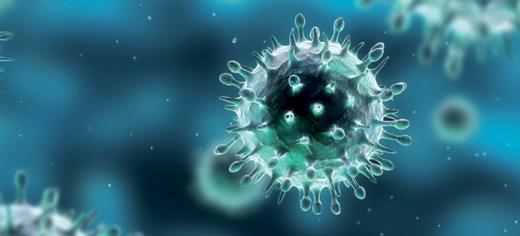
It is well established that our bodies possess gut bacteria that is beneficial for health. Now, researchers from Washington University in St. Louis, MO, have found that our bodies are also home to an average of five viruses responsible for numerous common illnesses, although it is unclear whether they have positive or negative implications for health.
“Most everyone is familiar with the idea that a normal bacterial flora exists in the body,” says study co-author Dr. Gregory Storch, a virologist and chief of the Division of Pediatric Infectious Diseases at the university. “Lots of people have asked whether there is a viral counterpart, and we haven’t had a clear answer. But now we know there is a normal viral flora, and it’s rich and complex.”
The findings, which form a part of the Human Microbiome Project funded by the National Institutes of Health, were recently published in the journal BMC Biology.
To reach their conclusions, the research team — led by Dr. Kristine M. Wylie, PhD, an instructor of pediatrics at the university — collected 706 samples of bodily fluids from 102 healthy adults aged 18-40. The samples were taken from participants’ nose, skin, mouth, vagina and stools.
All participants were closely screened to ensure they had no active viral infections; participants were eliminated from the study if they had been diagnosed with human papillomavirus (HPV) in the past 2 years, or had a form of active genital herpes in the last 2 months.
For each sample, the researchers used high-throughput DNA sequencing that enabled them to detect a wide range of viruses.
Seven families of viruses identified
Nearly all (98 percent) participants harbored at least one virus, with some harboring as many as 10-15 viruses. On average, five viruses were detected among each participant. The researchers say they were surprised to find so many. “We only sampled up to five body sites in each person and would expect to see many more viruses if we had sampled the entire body,” adds Dr. Wylie.
From the samples, the team detected seven unique families of viruses. These included viruses responsible for non-sexually transmitted herpes — herpesvirus 6 and 7. These viruses were detected among 98 percent of participants who were sampled from the mouth.
Strains of HPV were found in around 75 percent of skin samples and 50 percent of nose samples, while new strains of the virus were found in both skin and nose samples. Around 38 percent of female participants had HPV strains in vagina samples, with many of these harboring strains associated with increased risk of cervical cancer, such as HPV 16 and HPV 18.
The researchers also identified adenoviruses — responsible for pneumonia and the common cold — in the majority of samples.
It is possible, the researchers note, that the viruses identified were lurking infections from years before. But Dr. Wylie says that dormant viruses usually reside in cells rather than bodily fluids, which is where the viruses were found in this study.
“This study is the first to use high-throughput DNA sequencing to describe the diversity of eukaryotic DNA viruses in a large cohort of individuals who were sampled at multiple body sites,” the team writes. “This analysis demonstrates that there is a ‘normal viral flora’ in generally healthy, asymptomatic individuals.”
They admit that it is unclear as to whether the viruses are beneficial or detrimental to health, but they hypothesize that the viruses may boost the immune system’s response to harmful pathogens in some cases, while increasing the risk of infection in others. For instance, a study published in June found that the interaction of dormant viruses in the body may actually play a role in the development of certain cancers, particularly Kaposi’s sarcoma.
“It’s very important to know what viruses are present in a person without causing a problem and what viruses could be responsible for serious illnesses that need medical attention,” says Dr. Storch. “While more research remains, we now have a much clearer picture of the communities of viruses that naturally exist in healthy people.”
